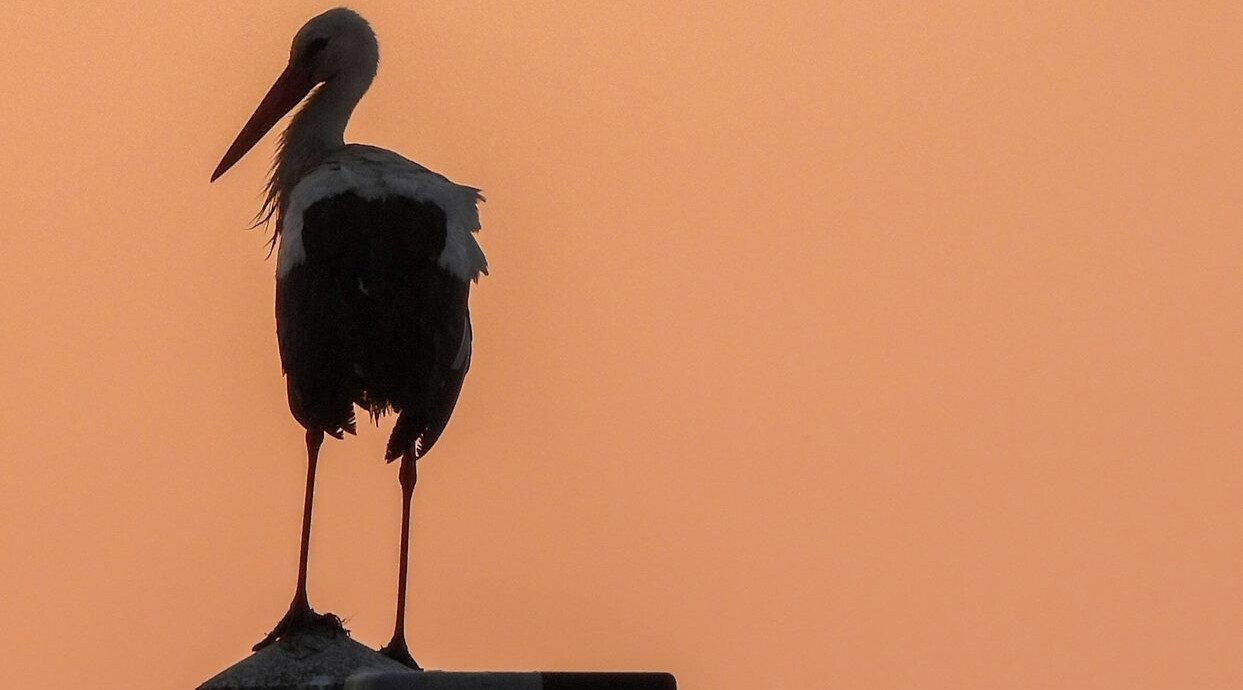During mid week a week ago, I managed to snatch some time to visit Raysut settling pools in the late afternoon.
The good news is that about 45 Abdim’s stork had arrived.
It is only in very recent years that they have chosen to winter in Salalah and it looks like that will continue this year.
An Abdim’s stork
three Abdim’s stork
This is only one tenth of the total possible number. I only hope the rest got across Yemen before cyclone Chapala broke a few days later. If not we may not have so many here this year.I saw the 45 flying over the settling pools but didn’t take any photos there because they were directly into the sun.
By the time I had positioned myself they had disappeared. Luckily for me, I passed a few of them on the way out of the industrial area where they had taken up roosting positions just before dusk mostly on telegraph posts.
white stork in the distance
They weren’t the only storks around. 30 or so white stork were grazing at the bottom end of a stream created by overflow from the settling pools.
This was in the distance and near to the rubbish dump itself. Near-by several tens of steppe eagle were flying. I also spotted three Eastern Imperial eagle and two greater spotted eagle.
vagrant spur-winged lapwing
Inside the settling pools, the birding was fine but somewhat unchanged from my last visit. The vagrant spur-winged lapwing has been present for over 10 months now.
At various times, it has been associating with up to eight red-wattled lapwing. All summer, it was with one and at the moment it has three around it.
lapwings
Neither species breeds in Dhofar.
I am beginning to see more and more white wagtail down here and fewer and fewer yellow wagtail though both were present last week.
citrine wagtail
However in winter, the wagtail in the highest numbers at the settling pools is likely to be citrine wagtail. It certainly was last year.
little grebe
The little grebe have bred well. I counted ten last week. It was my largest count there.
mostly garganey
Duck numbers are still increasing. The garganey are still present but large numbers of northern shoveller and at least one common teal (see right hand duck of the picture above).
garganey and northern shoveller
As I was there so close to dusk. some species were forming large flocks ahead of roosting. Notably this included at least 100 Ruppells weaver as well as a much small number of African silverbill.
African silverbill
On Saturday, I went into the desert Saeed Shanfari. We are both very happy with the results.
I will use the next two blogs to report on what we saw.
Robert Tovey
Dr Rob Tovey is a scientist by training and more recently an English teacher. His profession allows him to travel to some of the more difficult-to-get-to places and stay there for years if his inclination takes him. He is a keen bird watcher, blogger and amateur photographer. He has worked in Azerbaijan and Libya and is currently in Saudi Arabia. Rob also has a base in Bulgaria so overall is becoming a bit of birding specialist in very general terms where East meets West.

Leave a Reply